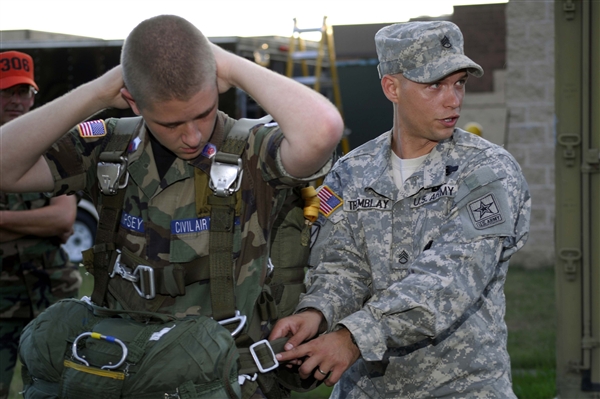Farnborough, UK — A counterintuitive liquid which hardens when struck has been developed by BAE Systems as part of a project to create future body armour offering soldiers greater ballistics protection and ease of movement in combat situations.
The technology, dubbed ‘liquid armour’ by scientists and engineers at BAE Systems, harnesses the unique properties of shear thickening fluids which ‘lock’ together when subjected to a force to enhance the existing energy absorbing properties of material structures like Kevlar.
Ceramic based armour plates used in current body armour systems to cover large areas of the torso are heavy and bulky, restricting movement and contributing to fatigue, particularly in harsh environments like Afghanistan.
Liquid armour has been designed to address a requirement for materials which can offers troops increased protection with reduced mass, wider area cover, greater manoeuvrability and easy integration with other systems. The technology can be integrated into standard Kevlar body armour to offer superior, freedom of motion and a reduction in overall thickness of up 45 per cent.
Stewart Penney, Head of Business Development for Design and Materials Technologies at BAE Systems, said: “The technology is best explained by the example of stirring water with a spoon. In water you feel little resistance to the spoon. Whereas with ‘liquid armour’, you would feel significant resistance as the elements in the fluid lock together. The faster you stir, the harder it gets, so when a projectile impacts the material at speed, it hardens very quickly and absorbs the impact energy.”
When integrated with Kevlar, the reduced flow of the fluids in the liquid armour restricts the motion of the fabric yarns in relation to each other, resulting in an increase in area over which the impact energy is dispersed. As a result, the material is also far less likely to distort than standard body armour, which generally bends inwards when a bullet strikes, preventing death, but causing considerable pain.
Trials conducted at BAE Systems’ Advanced Technology Centre in Filton have shown the liquid armour allows thinner than standard armour to withstand equivalent levels of forces. An early prototype of the technology has been demonstrated to the UK Ministry of Defence and in the future BAE Systems hope to further develop liquid armour to create a super lightweight version of the material and incorporate the technology into body armour systems.
The team at BAE Systems is considering applications of the technology beyond the military. Stewart Penney said: “In addition to increasing the ballistic performance of combat body armour there is potential for developing a version that could be of interest to police forces and ambulance crews.”
About BAE Systems
BAE Systems is a global defence, security and aerospace company with approximately 107,000 employees worldwide. The Company delivers a full range of products and services for air, land and naval forces, as well as advanced electronics, security, information technology solutions and customer support services. In 2009 BAE Systems reported sales of £22.4 billion (US$ 36.2 billion)
For more information, please contact:
Kate Watcham, BAE Systems
Tel: +44 (0) 1252 383550 / + 44 (0) 7793 420731
kate.watcham@baesystems.com
Harry Ronaldson, Biss Lancaster
Tel: +44 (0) 20 7467 9218 Mob: +44 (0)772 0773 258
harry.ronaldson@bisslancaster.com
Issued by:
BAE Systems, Farnborough, Hampshire GU14 6YU, UK
Tel: +44 (0) 1252 384719 Fax: +44 (0) 1252 383947
24hr media hotline: + 44 (0) 7801 717739
www.baesystems.com
Text- / Bildquelle (source):
BAE Systems

 von
von 